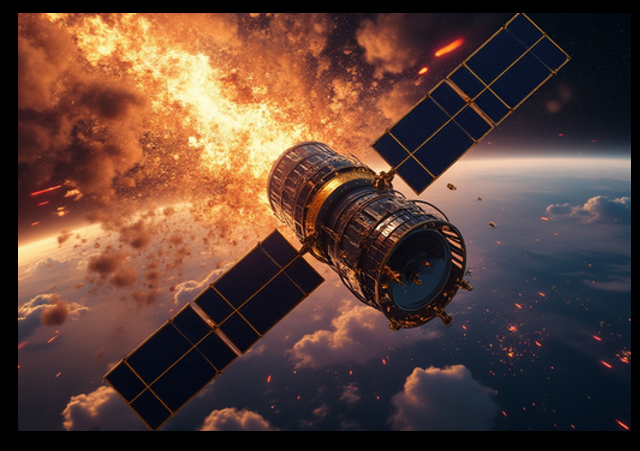Debris from Boeing-Built Satellite’s Explosion in Orbit Poses Danger to Other Satellites

Boeing has taken another hit to its program trajectory this week. A Boeing-made satellite, Intelsat 33e, exploded in space this week following an “anomaly,” resulting in its total loss.
The Intelsat 33e satellite, which was launched in 2016 and provides communications across Europe, Asia and Africa, experienced “an anomaly” on Saturday, Intelsat said in a news release. Attempts were made to work with Boeing and repair the satellite, but on Monday, the U.S. Space Force confirmed that the satellite had exploded.The satellite’s breakup left some customers without power or communications services. Intelsat said it is working with third-party providers to limit service interruptions, and is in communication with customers.Since the breakup, the U.S. Space Force is now tracking “around 20 associated pieces” of the satellite in space. The agency said that there are “no immediate threats” and routine assessments to ensure safety are ongoing.Russia’s space agency, Roscosmos, said it had recorded “more than 80 fragments” of the destroyed satellite. Analysis of the pieces’ trajectory determined that the destruction of the satellite was “instantaneous and high-energy,” Roscosmos said.
The satellite experienced a propulsion issue shortly after its launch, which reduced its operational lifespan by several years. The cause of the failure remains unknown at this time, and other space agencies signal they are concerned that unpredictable debris trajectories could threaten other satellites.
According to the British company Spaceflux, the fragments might still be a danger to other satellites.”The problem is that there is a lot of uncertainty regarding the orbits of these fragments at the moment,” said a Spaceflux spokesperson. “They can be potentially dangerous for other satellites but we do not know that yet.”
The satellite explosion has impacted communications services for customers in Europe, Africa, and parts of the Asia-Pacific region. Specifically, the Intelsat 33e satellite provided broadband communication services from a geostationary orbit about 35,000 km above the Indian Ocean.
This isn’t the first orbiting satellite loss for Boeing, either.
Earlier in 2019, the company had lost another Boeing-made satellite, IS-29e. The satellite was lost just after three years of its launch. It was ‘believed’ to have been the result of a wiring issue, or a space collision. However, the exact cause of that is yet to be determined.The currently exploded satellite IS-33e, launched in August 2016, was supposed to have a lifetime of 15 years, according to Space News. “It went into service three months later after an issue with its primary thruster and a second propulsion issue during testing took off 3.5 years from its initial lifespan,” the publication reported.
Meanwhile, Boeing’s bad year is getting worse. To begin with, NASA is giving up (at least temporarily) Starliner missions to the International Space Station.
The agency stated that Crew-10 and Crew-11 missions in 2025 will use SpaceX vehicles. However, the space agency hasn’t completely shut the door on the troubled craft……Despite all the dilemmas created by Starliner, NASA isn’t giving up on the Boeing spacecraft anytime soon. The space agency desperately needs the launch capacity and an astronomical amount of money has already been sunk into the project. NASA spent $5 billion on the Starliner’s development.
And Boeing is laying-0ff about 10 percent of its workforce.
Boeing said it was laying off 10% of its global workforce, some 17,000 people, to “align with our financial reality and to a more focused set of priorities.” Workers probably hope it isn’t the start of a trend.The reason for the cuts: Boeing hasn’t reported a full-year profit since 2018 and has amassed more than $40 billion in new long-term debt as a result of the Covid-19 pandemic and the worldwide grounding of the 737 MAX jet for much of 2019 and 2020. What’s more, quality problems have slowed down production, hurting revenue, for most of 2024.Most of the rest of the commercial aerospace industry is booming.
Hopefully, Boeing will get back on a proper trajectory soon.
CLICK HERE FOR FULL VERSION OF THIS STORY